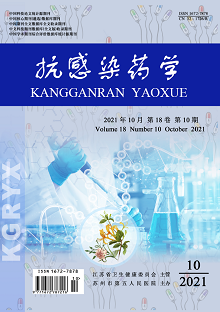ZHOU Yan
Objective: To study the distribution and drug resistance of pathogenic bacteria in 94 postoperative patients with hospital-acquired infections in department of thoracic surgery. Methods: 94 patients who underwent thoracic surgery in the Gushi County People's Hospital from September 2019 to September 2020 were selected. Sputum and urine samples were collected for bacterial culture and drug sensitivity test, and the distribution and drug resistance rate of pathogenic bacteria were analyzed. Results: There were 46 cases of nosocomial infection in 94 patients after thoracic surgery, and the infection rate was 48.94%(48/96). 123 specimens were collected from patients with hospital infection after thoracic surgery, and 146 strains of pathogenic bacteria were isolated, including 93 strains(63.70%) of Gram-negative bacteria, mostly Pseudomonas aeruginosa, Escherichia coli and Acinetobacter baumannii, and 48 strains (32.88%) of Gram-positive bacteria. Most of them were Staphylococcus aureus and coagulase negative Staphylococcus(CNS), and 5 strains of fungi(3.42%).Main Gram-negative bacterium(Pseudomonas aeruginosa, E. coli and Acinetobacter baumannii) resistant rate to piperacillin, ampicillin, tetracycline, cefazolin, levofloxacin, ciprofloxacin, sulfamethoxazole/trimethoprim were high, and they showed low resistant rate to amikacin, imipenem, cefoperazone sulbactam sodium, meropenem, vancomycin and cefotaxime. The main Gram-positive bacteria Staphylococcus aureus and CNS showed high drug resistance to amoxicillin, clindamycin, penicillin G, amikacin and erythromycin, while showed low drug resistance to teicoplanin, vancomycin, sulfamethoxazole/trimethoprim and fosfomycin. Conclusion: Pathogenic bacteria of postoperative nosocomial infection in thoracic surgery patients show multiple drug resistance, so it is necessary to timely understand the infection situation of patients and strengthen management, and select antibacterials strictly based on the results of bacterial culture and drug sensitivity test, so as to reduce the occurrence of pathogenic bacteria resistance.
